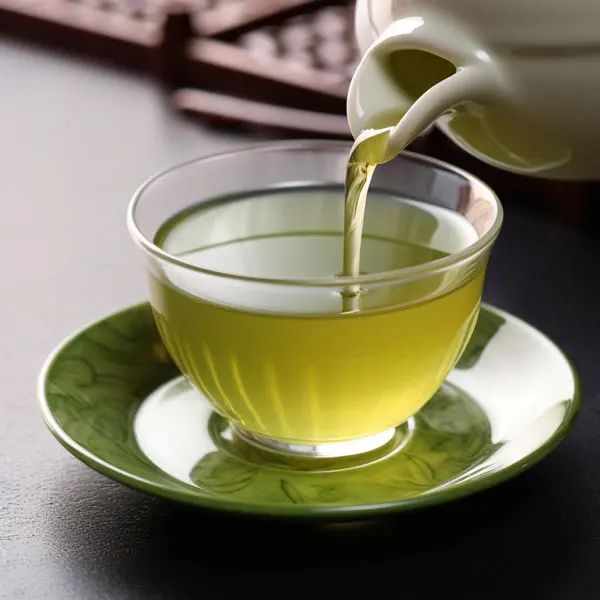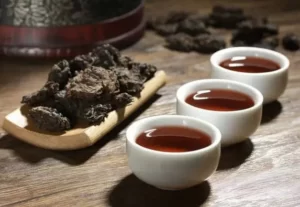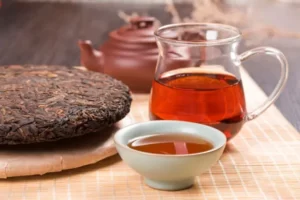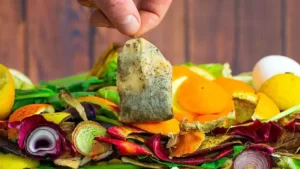Introduction
Dear tea enthusiasts, I’m Fuma, an expert in Chinese tea sets. Today I will take you on a journey to explore a special Chinese cultural treasure: our Yixing tea pots. This exquisite pottery has a history of several hundred years in China and is not only used for brewing tea but is also considered a work of art, showcasing the cultural cultivation of its owner.
What does Yixing Mean?
When it comes to Yixing tea pots, people often mention the “Pottery Capital” – Yixing in Jiangsu province. Some even buy teapots solely based on whether they are Yixing purple clay teapots. Yixing has become a symbol of authentic purple clay teapots. So why are Yixing tea pots so famous? It all comes down to the special clay known as purple clay or “rich and noble soil.”
Why is Yixing Synonymous with High-end Teapots?
Purple clay, also called Zisha clay, is a unique type of clay mineral with distinctive properties that set it apart from ordinary pottery clay. Here are the reasons why Yixing purple clay teapots are renowned:
1. Unique structure
Purple clay is a porous material with a dual porous structure, consisting of extremely fine pores and high density. When using a Yixing zisha teapot to brew tea, it retains the original flavor and aroma without dispersing, allowing the true fragrance and taste of the tea to emerge.
2. Excellent breathability
Those who have used Yixing tea pots know that even if you forget to empty the remaining tea overnight during the scorching summer, there won’t be any foul or strange odor in the teapot. This remarkable feature is attributed to the excellent breathability of purple clay, which surpasses that of ordinary porcelain teapots.
3. Absorption of tea juices
Over time, a Yixing purple clay teapot accumulates “tea stains” on its walls. Even when pouring boiling water into an empty teapot, it releases a rich aroma of tea. This quality is due to the specific porosity of the purple clay body, making it a unique characteristic of Yixing tea pots.
4. Excellent thermal shock resistance
Even in the depths of winter, pouring boiling water (after preheating the teapot) into a Yixing purple clay teapot will not cause it to expand or crack due to sudden temperature changes. Additionally, the slow thermal conductivity of purple clay teapots prevents them from becoming too hot to handle after brewing tea. They are highly resistant to high temperatures and can even be used for cooking tea leaves, making them truly versatile teaware.
Apart from Yixing, no other place’s clay can replicate the texture and effects. Therefore, they cannot be considered real yixing clay pots. Gradually, Yixing purple clay teapots have become a distinct category of tea utensils.
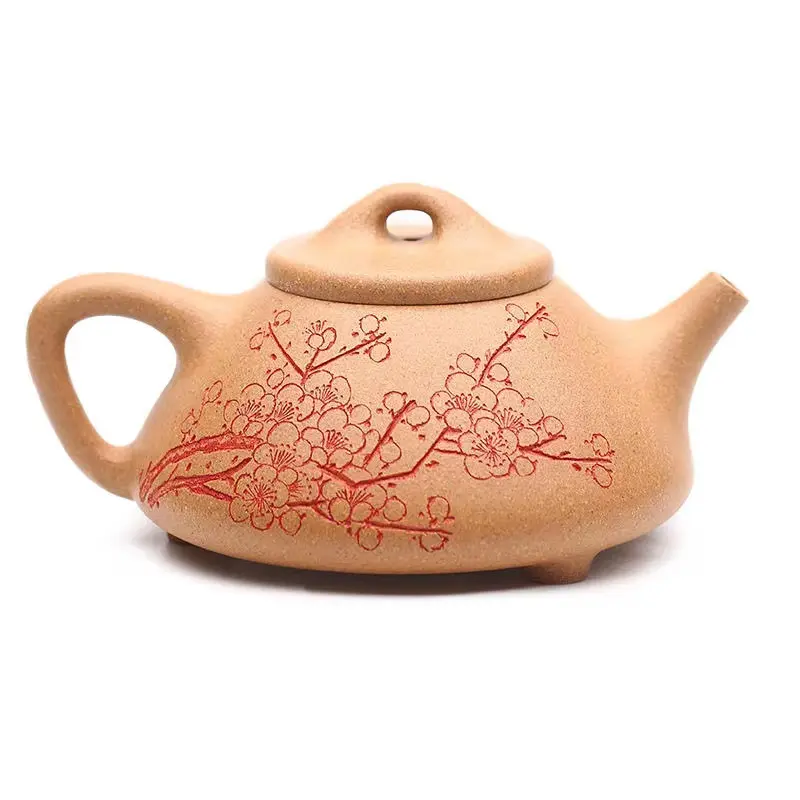
Origins of Yixing Tea Pots
When exactly did Yixing tea pots originate? In the field of professional archaeological research, there are two main viewpoints: one suggests the Song Dynasty, while the other proposes the Ming Dynasty.
1. Theory of Origin in the Song Dynasty
Regarding the theory of its origin in the Song Dynasty, in 1976, during the construction of the Yixing Hongqi Ceramic Factory in Yangjiaoshan, Dingshu Town, a kiln site was discovered. Numerous bricks from the Northern Song Dynasty and early fragments of Yixing teapots were unearthed. Combined with the poetic verses about Yixing teapots by literati of the same period, archaeologists tentatively concluded that Yixing tea pots may have originated in the Northern Song Dynasty.
However, this conclusion has always been highly debated in the academic community. Merely based on the fragments of Yixing tea pots found in a single deposit layer and the poetic verses of literati, it cannot be proven that Yixing teapots were widely produced or socially accepted at that time. Most scholars still believe that the Song Dynasty was only the cradle of Yixing teapots, where the Yixing clay was discovered, but not widely used for production.
2. Theory of Origin in the Ming Dynasty
The theory of its origin in the Ming Dynasty has more substantial evidence. In 1966, in the tomb of the eunuch Wu Jing in Majiashan, outside the Zhonghua Gate in Nanjing, Jiangsu Province, a Yixing teapot with a handle was unearthed, dating back to the 12th year of the Jiajing period (1533) in the Ming Dynasty.
Simultaneously, in a painting titled “Boiling Tea” by the Ming Dynasty artist Wang Wen, there is a teapot that bears a striking resemblance to the Yixing tea pots unearthed from Wu Jing’s tomb. Based on this evidence, we can infer that people had already started using Yixing tea pots for brewing tea in the mid-Ming Dynasty(the 16th century).
With the physical artifacts as a basis, people began searching within the Ming Dynasty to discover who the “ancestor of Yixing teapots” truly was. Finally, evidence was found in the writings of the Ming Dynasty author Zhou Gao. The book mentioned a monk from Jinsha Temple (also known as Golden Sand Temple) and an outstanding craftsman named Gong Chun, who learned the art of teapot making from the monk at Jinsha Temple.
Combining the above historical records, it became widely accepted that Yixing tea pots originated in the Ming Dynasty. Now that we have understood the origins of Yixing tea pots, let’s delve into their development and prosperity.
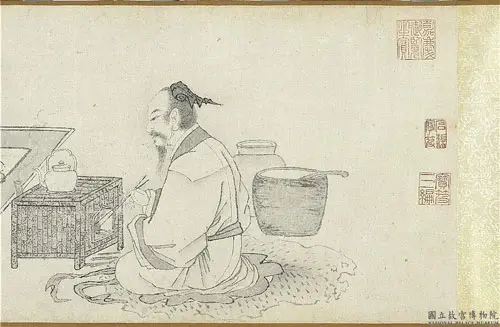
Development and Prosperity of Yixing Tea Pots
1. Ming Dynasty – Development Period
After the founding father of Yixing tea pots, Gong Chun, there were increasing records about Yixing teapots. The Wanli period of the Ming Dynasty was a stage of unprecedented development for Yixing tea pots, marked by the emergence of many renowned masters.
Design: During this period, the primary designs of Yixing tea pots imitated bronzeware, porcelain, biological forms, and everyday objects. The emphasis was on the textured appearance.
Colors: Yixing pottery at this time began to pay attention to the blending of clay colors. Finer powders were mixed with coarser particles, creating an antique and elegant look.
Craftsmanship: The hand-molding method (using paddles) had matured, and firing techniques were improved. These continuous experiments from clay to handcrafting to firing signaled the vibrant development of Yixing teapots.
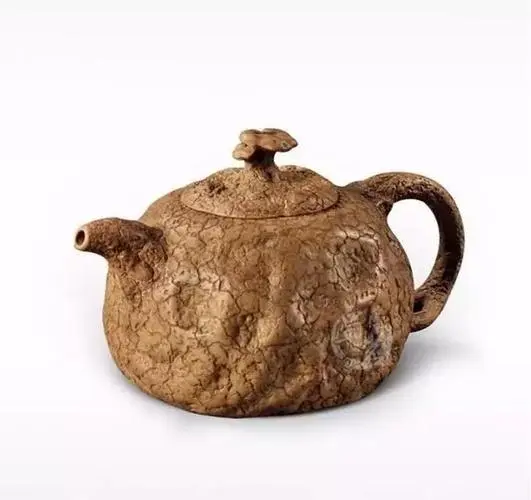
2. Qing Dynasty – Prosperity Period
In the Qing Dynasty, Yixing tea pots developed their own distinctive styles, with three representative trends:
Aesthetics of Literati
During the Qing Dynasty, there were many literati who participated in teapot making. Chen Mingyuan, active during the Kangxi reign, achieved the highest level of mastery after Gong Chun and Shi Dabin. His teapots were rich in refined elegance, featuring relief designs and calligraphic decorations. They were praised as “exquisitely refined.”
Another renowned artist was Chen Mansheng, who designed the Eighteen Styles of Mansheng, showcasing innovative and sophisticated teapot shapes with delicate paintings and calligraphy. Additionally, the famous Yucheng Kiln, which produced teapots favored by literati, also thrived during the Qing Dynasty.
Influence of Export
During the Kangxi period of the Qing Dynasty(1654-1722), Yixing teapots were exported to countries such as England, Germany, and the Netherlands. To cater to foreign aesthetics, exported Yixing teapots underwent changes in design, forming a unique style. These teapots often featured intricate patterns and larger sizes.
However, during the Xianfeng period(1851-1861), the outbreak of the Taiping Rebellion led to disruptions in Yixing due to the turmoil. Teapot production ceased for a period, gradually recovering after the conflict subsided.
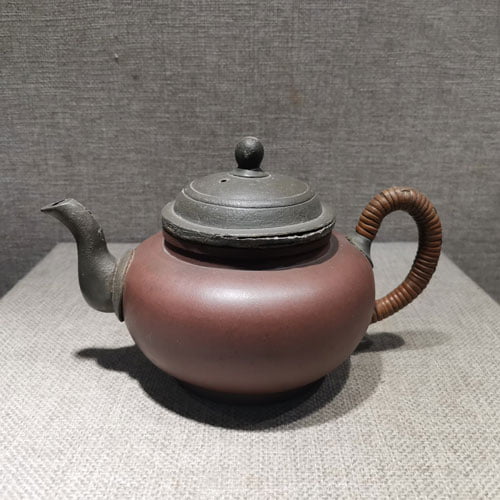
Expression of National Spirit
During the late Qing Dynasty, when China faced foreign aggression, many Yixing artists refused to follow the trend or bow to the ruling class. They integrated their serious attitudes towards life and art, as well as their national pride, into Yixing teapots. The Bolang Chui teapot, resembling a hammer used to assassinate Emperor Qin Shi Huang, is one of the representative examples.
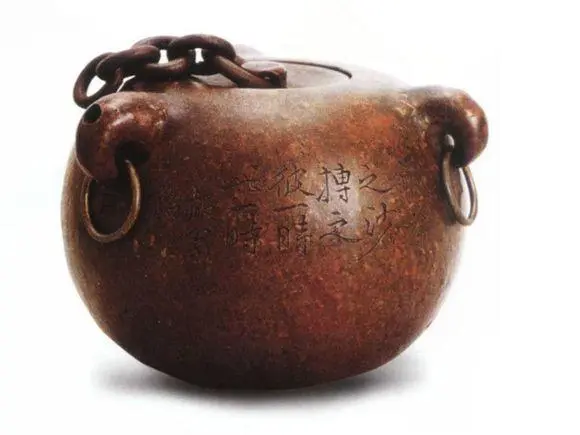
Republic of China – Dormant Period
During the Republic of China period, Yixing tea pots were not as popular as before, but their recognition remained high internationally. They received gold medals in multiple World Expos, including those in Chicago, Panama, and London. Outstanding craftsmen emerged during this period, such as Cheng Shouzhen, Chen Guangming, and Yu Guoliang.
Some craftsmen excelled in imitating ancient styles, adding their own innovations based on previous works to develop their unique features. Others were skilled at observing the forms of fish, insects, flowers, and plants, and imitating and reproducing their shapes. Both approaches are now considered classics.
3. Modern Times – Flourishing Period
With the establishment of the People’s Republic of China, the government revitalized and supported the Yixing teapot industry, organizing production and exports. Yixing cooperatives emerged, leading to the recovery of the teapot industry after a decline during the war years.
Veteran artisans focused on mentoring apprentices rather than solely engaging in production. Apprentices had a three-year period without production pressure, benefiting from favorable conditions for learning and living. This era nurtured hundreds of young artisans, and many of them became master-level figures.
It is worth mentioning the seven veteran artisans appointed by the Jiangsu Provincial Government, commonly known as the “Experienced Guides”-Ren Ganting, Zhu Kexin, Pei Shimin, Wu Yungen, Wang Yinchun, Gu Jingzhou, and Jiang Rong (listed in chronological order of birth). Each of these masters has their own characteristics, expertise, and iconic teapot styles. In the article “Classic purple clay pot”, I will provide detailed introductions about each of them.
4. Now: Revitalization and Globalization
Now, Yixing teapots continue to carry forward their traditions while embracing the influence of globalization.
Yixing tea pots have attracted attention from around the world with their exquisite craftsmanship, unique aesthetics, and perfect integration with tea. Their performances at events such as the World Tea Art Competition and international ceramic exhibitions have captivated audiences from various countries. The production techniques and the harmonious combination of aesthetics and tea have sparked a growing interest among tea enthusiasts in the West.
Additionally, we must not overlook the new developments of Yixing teapots in the modern age. Some craftsmen have started utilizing 3D printing technology to create new teapot designs, while others are exploring the use of robots in teapot production. These endeavors aim to blend traditional Yixing teapot making techniques with modern technology, making them even more diverse and enriching.
Conclusion
In conclusion, the rich history, unique craftsmanship, and cultural significance of Yixing tea pots make them an undeniable gem in the world of tea-ware. They are not merely tools for brewing tea, but also an embodiment of centuries-old Chinese culture and artistry. Whether you’re a tea enthusiast or simply appreciate unique cultural artifacts, owning a Yixing teapot can enhance your tea-drinking experience and deepen your understanding of Chinese heritage.
